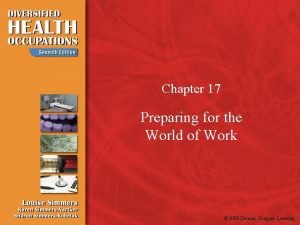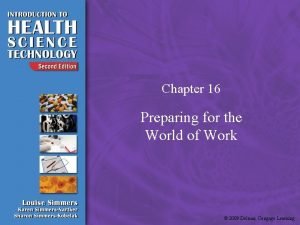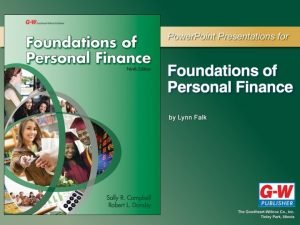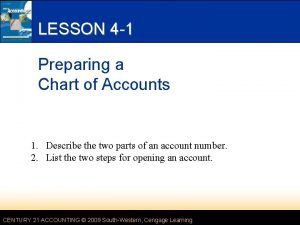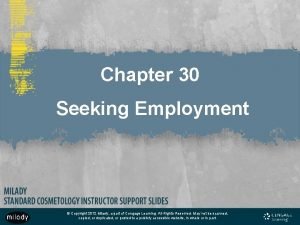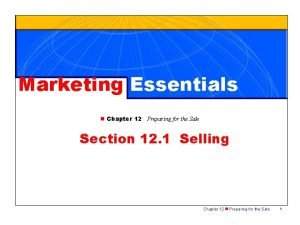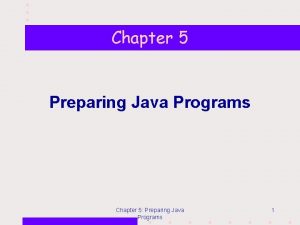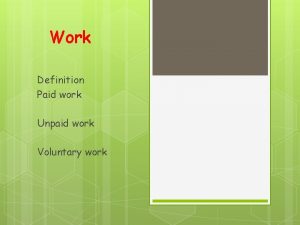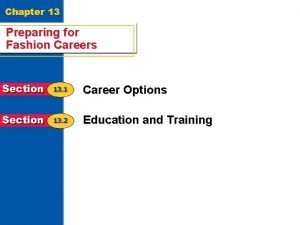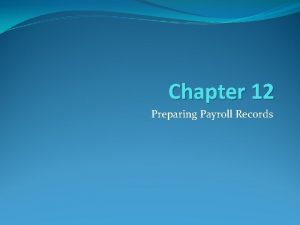Chapter 17 Preparing for the World of Work





















- Slides: 21

Chapter 17 Preparing for the World of Work © 2009 Delmar, Cengage Learning

17: 1 Developing Job-Keeping Skills • Must develop good characteristics to be a good employee • Use correct grammar at all times • Report to work on time and when scheduled • Be prepared to work when you arrive • Practice teamwork (continues) © 2009 Delmar, Cengage Learning

Developing Job-Keeping Skills (continued) • • Promote a positive attitude Accept responsibility for your actions Be willing to learn Without good job-keeping skills, no amount of knowledge will help you keep a job © 2009 Delmar, Cengage Learning

17: 2 Writing a Cover Letter and Preparing a Résumé • Job seeking: – – – Evaluate your abilities Decide on the type of job Explore job sources Identify places of employment Prepare to apply for the position (continues) © 2009 Delmar, Cengage Learning

Writing a Cover Letter and Preparing a Résumé (continued) • Cover letter • Purpose of a cover letter is to obtain an interview • Must create a good impression • Well organized • If possible, address letter to the correct individual © 2009 Delmar, Cengage Learning

Cover Letter Format • • • Usually contains 3– 4 paragraphs Paragraph one contents Paragraph two contents Paragraph three contents Paragraph four contents © 2009 Delmar, Cengage Learning

Résumé • • Record of information Thorough, concise summary Basic information for the employer Computer printed or typed and attractive in appearance • Format for résumé can vary • References are separate and not part of the résumé (continues) © 2009 Delmar, Cengage Learning

Résumé (continued) • Honesty is always the best policy • List all information before preparing your résumé • Keep résumé to one page • Use correct size envelope • Same stationery for cover letter, résumé, envelope, and references © 2009 Delmar, Cengage Learning

Parts of a Résumé • Personal identification • Employee objective, job desired, or career goal • Educational background • Work or employment experience • Skills • Other activities © 2009 Delmar, Cengage Learning

Career Passports or Portfolios • Professional way to highlight your knowledge, abilities, and skills • Allows for presentation in an organized and efficient manner • Introductory letter • Résumé • Skill list and competency level (continues) © 2009 Delmar, Cengage Learning

Career Passports or Portfolios (continued) • Letters of recommendation • Copies of work evaluations • Documentation of mastering job-keeping skills • Organize information in a neat binder or portfolio (continues) © 2009 Delmar, Cengage Learning

Career Passports or Portfolios (continued) • Use tab dividers to separate into organized sections • Use correct grammar and punctuation on all written information • Effort will pay off at interview © 2009 Delmar, Cengage Learning

17: 3 Completing Job Application Forms • Used by employers to collect specific information • Vary between employers • Most request similar information • Read entire form first before completing information (continues) © 2009 Delmar, Cengage Learning

Completing Job Application Forms (continued) • Have all required information when you go to an interview • Basic principles for completing application forms • Wallet card • Remember, employers use application forms as a screening tool © 2009 Delmar, Cengage Learning

17: 4 Participating in a Job Interview • Usually last step before getting or being denied a particular job • You have been selected based on your résumé and/or application • Purposes of interview • Careful preparation is needed • Careful attention to the date and time of interview (continues) © 2009 Delmar, Cengage Learning

Participating in a Job Interview (continued) • • • Dress appropriately Check entire appearance Leave early for the interview Points to remember during interview Send a follow-up note or letter after the interview (continues) © 2009 Delmar, Cengage Learning

Participating in a Job Interview (continued) • Many difficult questions can be asked during an interview • Federal law prohibits discrimination in regard to age, cultural or ethnic background, marital status, parenthood, religion, race, or sex • You may be asked to provide proof of eligibility to work © 2009 Delmar, Cengage Learning

17: 5 Determining Net Income • Income: money you are earning that is available to you • Amount you earn and amount you spend may vary • Gross income • Net income (continues) © 2009 Delmar, Cengage Learning

Determining Net Income (continued) • • Calculation of gross income Calculation of net monthly pay Essential to calculate your net income: – Know what amount of money you have to spend – Determine your lifestyle – Manage your money more effectively © 2009 Delmar, Cengage Learning

17: 6 Calculating a Budget • • Budget is an itemized list of living expenses Must be realistic to be effective Types of expenses: fixed and variable Way to calculate a budget using percentage ranges • Incorporate savings into a budget • Calculating monthly payments (continues) © 2009 Delmar, Cengage Learning

Calculating a Budget (continued) • Important that budget amounts do not exceed amount of net monthly income • Final step is to live by your budget • Creation of a budget leads to careful management of hard-earned money © 2009 Delmar, Cengage Learning
 Chapter 18.1 preparing for the world of work
Chapter 18.1 preparing for the world of work Chapter 17:4 participating in a job interview
Chapter 17:4 participating in a job interview Chapter 18 preparing for the world of work
Chapter 18 preparing for the world of work What is coring in pharmacy
What is coring in pharmacy Chapter 15 preparing for careers
Chapter 15 preparing for careers Part two preparing a chart of accounts
Part two preparing a chart of accounts Chapter 1 preparing your path to success
Chapter 1 preparing your path to success Milady chapter 26 pedicuring test answers
Milady chapter 26 pedicuring test answers Marketing essentials meaning
Marketing essentials meaning Chapter 4 work and energy section 1 work and machines
Chapter 4 work and energy section 1 work and machines Ap world history chapter 25 africa and the atlantic world
Ap world history chapter 25 africa and the atlantic world Kontinuitetshantering
Kontinuitetshantering Typiska drag för en novell
Typiska drag för en novell Tack för att ni lyssnade bild
Tack för att ni lyssnade bild Returpilarna
Returpilarna Varför kallas perioden 1918-1939 för mellankrigstiden?
Varför kallas perioden 1918-1939 för mellankrigstiden? En lathund för arbete med kontinuitetshantering
En lathund för arbete med kontinuitetshantering Personalliggare bygg undantag
Personalliggare bygg undantag Personlig tidbok fylla i
Personlig tidbok fylla i Anatomi organ reproduksi
Anatomi organ reproduksi Vad är densitet
Vad är densitet Datorkunskap för nybörjare
Datorkunskap för nybörjare

